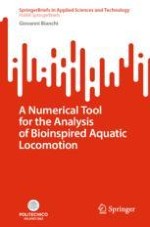
2023 | OriginalPaper | Buchkapitel
1. Introduction and State of the Art
verfasst von : Giovanni Bianchi
Erschienen in: A Numerical Tool for the Analysis of Bioinspired Aquatic Locomotion
Verlag: Springer Nature Switzerland
Aktivieren Sie unsere intelligente Suche, um passende Fachinhalte oder Patente zu finden.
Wählen Sie Textabschnitte aus um mit Künstlicher Intelligenz passenden Patente zu finden. powered by
Markieren Sie Textabschnitte, um KI-gestützt weitere passende Inhalte zu finden. powered by